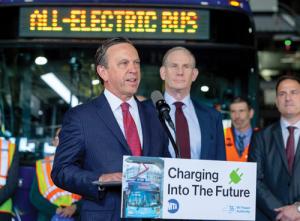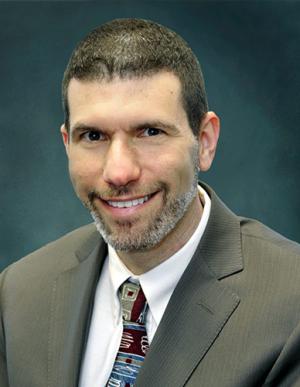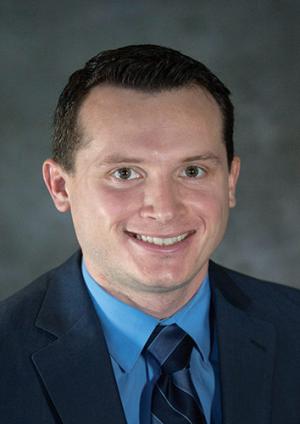Top Innovators
The New York Power Authority won the Fortnightly Top Innovator 2024 award ''William Hammer Top Innovator in Electrification'' for its Overhead Pantograph Charging Systems.

PUF's Steve Mitnick: What is this innovation and what's its impact?
John Markowitz: New York State has greenhouse gas goals through the climate legislation and transportation has a big impact. It's responsible for more than a third of the emissions. Electrification of transportation must be addressed.
The New York City mass transit is one of the most challenging to attack. There are various goals for the transit agencies in the state. The upstate transit agencies have a goal to be one hundred percent electric by 2035. New York City, because it's larger, has the same goal but in 2040.
 John Markowitz: If a charger is in service, the manager wants to see a red dot on a map and to know where the technician is. All the buses are going to be charging at two in the morning, but it should be managed intelligently.
John Markowitz: If a charger is in service, the manager wants to see a red dot on a map and to know where the technician is. All the buses are going to be charging at two in the morning, but it should be managed intelligently.
PUF: Buffalo, Syracuse, Albany, and Binghamton, can get there faster?
John Markowitz: Yes, they're much smaller. The five biggest of the upstate fleets combined are thirteen hundred buses. New York City has fifty-seven hundred buses.
New York City is more difficult because there are so many buses in each building. One building could have two hundred fifty buses.
Finding places to put the electrical equipment is a huge challenge for Nick's team. Expanding the electric rooms to put in new transformer vaults with Con Ed is a big undertaking.
 Nick Peretta: These overhead pantograph systems are unique. When we started building the first phase, it was 2020 and a standard for these overhead charging systems didn’t exist. We were at the forefront of installing these charging systems.
Nick Peretta: These overhead pantograph systems are unique. When we started building the first phase, it was 2020 and a standard for these overhead charging systems didn’t exist. We were at the forefront of installing these charging systems.
New York City Transit represents ten to fifteen percent of the total market for buses in the U.S. and they operate more than twenty depots. In addition to scale, there are logistical problems and contending with the aging grid in parts in New York City.
PUF: These buses need a lot of electricity from Con Ed.
John Markowitz: It is the opposite of regular utility load in that charging is primarily off-peak. At rush hour the buses are all out and about. There's some on-street charging as part of the project, but that's mostly used in winter. In winter, these buses use a lot more energy than in the summer.
The bigger issue is in urban routes where buses travel slowly because of the traffic. Heating the bus is a challenge. It's a big container. When it is twenty degrees out, the bus is trying to stay at seventy degrees with constant opening and closing of the doors.
A certain number of on-street chargers must be installed that are also the overhead pantograph style, so when the bus driver takes a break, a boost or an opportunity charge can be made.
Maybe the bus goes from forty percent charged up to seventy percent, and then is driven again for several hours, and the cycle is repeated. That's a common part of the challenge too.
On-street chargers are hard to install because they're on city roads and getting all the permits to build is trickier than working in a depot. Also, it's tough finding a spot big enough to park a bus for thirty minutes.
Nick Peretta: We did this in phases. In the first phase, which is in progress, but nearing completion, we installed sixty charging systems at four locations. Twenty of the chargers are operational, and the remaining forty are under construction.
For most of those depots, we used the existing electrical capacity that could support the chargers. That was a lot easier than working with Con Ed to bring in power because it could take years. Almost all those chargers will be operational by the end of this year.
The second phase, which is significantly larger, is for two hundred chargers at five locations. Many of these require the big Con Ed upgrades.
We're bringing in ten megawatts to some of these depots. The scale of power is significant. Six transformers and network protectors must be installed, so it's a big construction project.
Some of these bus depots are going to have sixty, seventy charging systems. Finding space for that is significant. We have to build or expand electric rooms.
These overhead pantograph systems are unique. When we started building the first phase, it was 2020 and a standard for these overhead charging systems didn't exist. There was a draft, but we were at the forefront of installing these charging systems.
There've been some tweaks to the communication protocols between the buses and the charging systems. The components had to be edited, and through the early installation, it was a bit challenging, as we would find reliability issues and constantly had to engage with charging vendors and bus manufacturers to make these systems work.
MTA keeps telling us the buses must roll out in the morning, so we can't have them sitting in the depot with failed chargers. It's more difficult than filling up with diesel at the end of the route. They're charging for several hours overnight.
These chargers have to be reliable. California has done it as well, but not a lot of transit agencies are doing it at this scale with this new technology and working with multiple vendors in multiple locations.
PUF: Talk about the overhead pantograph charger.
Nick Peretta: They take four hundred eighty volts, three-phase power, and then the chargers convert that from AC power to DC power. DC power could go from four hundred volts to nine hundred volts. The power levels at each of the chargers are typically one hundred fifty kilowatts.
Level three starts as low as twenty-five kilowatts. We're installing systems with one hundred fifty kilowatts and some of them have three hundred kilowatts.
We installed an on-street charger in Brooklyn at the Williamsburg Bridge Plaza. It's an on-route charger where a lot of the buses will stop. That is four hundred fifty kilowatts and is the highest power charger we've ever installed. This equates to fast charging speeds.
PUF: There's also the software for charging.
John Markowitz: Nick's team's been scoring proposals for the software that would manage all that. The depot manager wants a dashboard to see the current state of charge on each bus.
If a charger is in service, the manager wants to see a red dot on a map and wants to know where the technician is who is coming to service it. It's important to manage the load properly because all the buses are going to be charging at two in the morning, but it should be managed intelligently, based on which buses are going to go out first and which come out last. There's a lot of science to it.
PUF: What are the roles? There's a team at NYPA, MTA, and some other folks.
Nick Peretta: We act as the owner's engineer or owner's rep for the MTA. They bring us on to implement the full project. On my team, we have about five or six engineers working full time in different phases, who are mostly project managers.
We also have a full-time construction manager. Then we hire service providers to help implement the project, manage the design and the construction. We have different implementation models, but essentially, we use a main service provider or multiple service providers to implement the work.
There's significant coordination with Con Ed and we're always meeting with them on upgrades. We're meeting with the MTA, with their department of buses group. They're the ones with real coordination.
The MTA is purchasing the buses, making sure they show up if there are issues with the buses. They're coordinating with the bus manufacturers.
We're working with the MTA construction and design group who oversee large construction projects. That's the same group that builds a new subway or extension.
PUF: John, what's your role?
John Markowitz: My side is the business development and policy and then the tail end of the project as well, like the operations part.
It is getting the projects going, helping our government customers plan for this kind of work. It's monitoring all the policies that come from the legislature or governor's office. Also, utility policy that affects implementing these projects, and managing that.
At the end of the project, once Nick hands the customer the keys to all these chargers, we negotiate a long-term service agreement for that procurement. Then we enforce it because all this becomes mission critical.
When you do your first pilot of buses, it's okay for a bus or charger to fail because there's some diesel backup bus that'll run the route that day. But as this gets to scale, you don't have those backups because the feds have a cap on how many backup buses are in your fleet. It has to do with the federal funding formulas between the transit agencies and the feds.
There can only be around ten or fifteen percent of the fleet as spares for peak days and for buses that are down. Once the fleet is above ten percent electric, now they have to work, otherwise people aren't going to school or work.
With the transit agencies, we have a plan where parts are stocked locally at the depot, the technician is based locally, and when a charger is out, a technician needs to report in X number of hours depending on what kind of outage.
We get pulled in to help support that at the end of the project if there are any issues, or if MTA is not getting the proper support from the vendor. It's a cradle-to-grave relationship with our government customers.
PUF: What's the most rewarding part of this?
Nick Peretta: Going through New York City occasionally we'll see some of these electric buses on the street and it is shocking. We hear feedback from the people that say, "It's so much better. It's so much cleaner. It doesn't smell. We love how quiet it is."
In areas like the Bronx, with poor air quality and high asthma rates, the buses are going to help improve the air quality of New York City. It's going to make everyone's commute better. That's rewarding, seeing this grow and people enjoying it.
John Markowitz: Again, it's the air quality in densely populated areas. There are some bus depots next to an apartment building. Now it's not going to smell. It's not going to be noisy when the buses roll out.
That's transformational.
Once Nick and I were doing a presentation and had pictures of a bus stop inside a museum in Europe.
It has no emissions. You could wait for your bus inside. That's a concept most people here can't yet get their heads around but hopefully it's a start.
Lead image: At MTA’s Grand Ave. station in Queens. From left, NYPA CEO Justin Driscoll and MTA CEO Janno Lieber.




